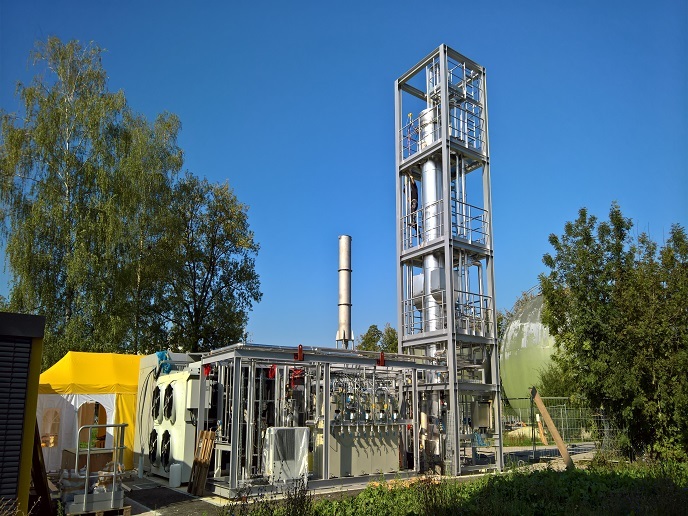Renewably created, long-term energy storage through methane
Although new renewable energy technologies receive considerable publicity, the world still runs mostly on fossil fuels because renewables are unable to meet demand. This is especially true at a seasonal level, where energy can be readily generated during summer but is needed most during winter. Key to solving this problem is long-term energy storage. In terms of continent-scale power supplies that are stable over months, only chemical storage (gas and liquid fuels) is a viable option.
Power to Gas
The EU-funded STOREandGO(opens in new window) project refined a suitable method, called Power-to-Gas (PtG). This uses renewable energy to generate methane that can be stored in conventional gas infrastructure. The project demonstrated the concept’s readiness for integration into existing energy networks, at three separate test sites showing wide climatic variation: southern Italy, Switzerland and northern Germany. The study also yielded a roadmap for introducing PtG to the EU generally. In the first step of the PtG process, solar- or wind-generated electricity powers electrolysers, which liberate hydrogen from water. In the second step, this hydrogen is combined with carbon dioxide, resulting in synthetic methane. This combination is achieved via a chemical process called methanation. It can involve either chemical catalysts and high temperatures, or bacteria-like organisms called Archaea at low temperatures. “If the carbon dioxide used in the process comes from renewable sources, such as wastewater or biomass residues, then the methane produced via PtG can be considered renewable,” explains Dr Simon Verleger, Operations Coordinator of STOREandGO. The methane can be stored and transported, in either liquid or gas forms, using the existing infrastructure.
Storage and transport
At the Swiss and German sites, the synthetic methane was injected directly into existing gas grids consisting of pipelines and underground storage tanks. The methane content was more than 99 %, which is higher than conventional gas supplies. At the Italian site, the methane was liquefied, enabling its use and transport like liquid natural gas. Liquefied methane has particular application for truck and ship engines. If these notoriously polluting vehicles were equipped with gas engines, the PtG process would make this entire transportation sector virtually climate neutral. The liquefaction technology need only be implemented at a few key locations. Results proved that both methanation methods work well under realistic conditions. The process achieved 76 % efficiency in Switzerland, and Verleger states that this could be easily increased to 88 %. Therefore, PtG competes very well with power-to-hydrogen and all-electric applications. Researchers determined that with green CO2 alone, it would be possible to produce 1 200 TWh of renewable methane in 2050, sufficient to meet EU gas demand for several months. Concerning the widespread adoption of PtG, the analysis(opens in new window) revealed factors even more important than efficiency and cost, specifically EU policy. “If the EU wants to support the transition to PtG,” adds Verleger, “policy changes would have to include a working market for renewable gases, quotas for renewable gases in specific sectors, or higher prices for emitting CO2.” With such changes, PtG has a real future and will finally enable the storage of renewably created energy.







